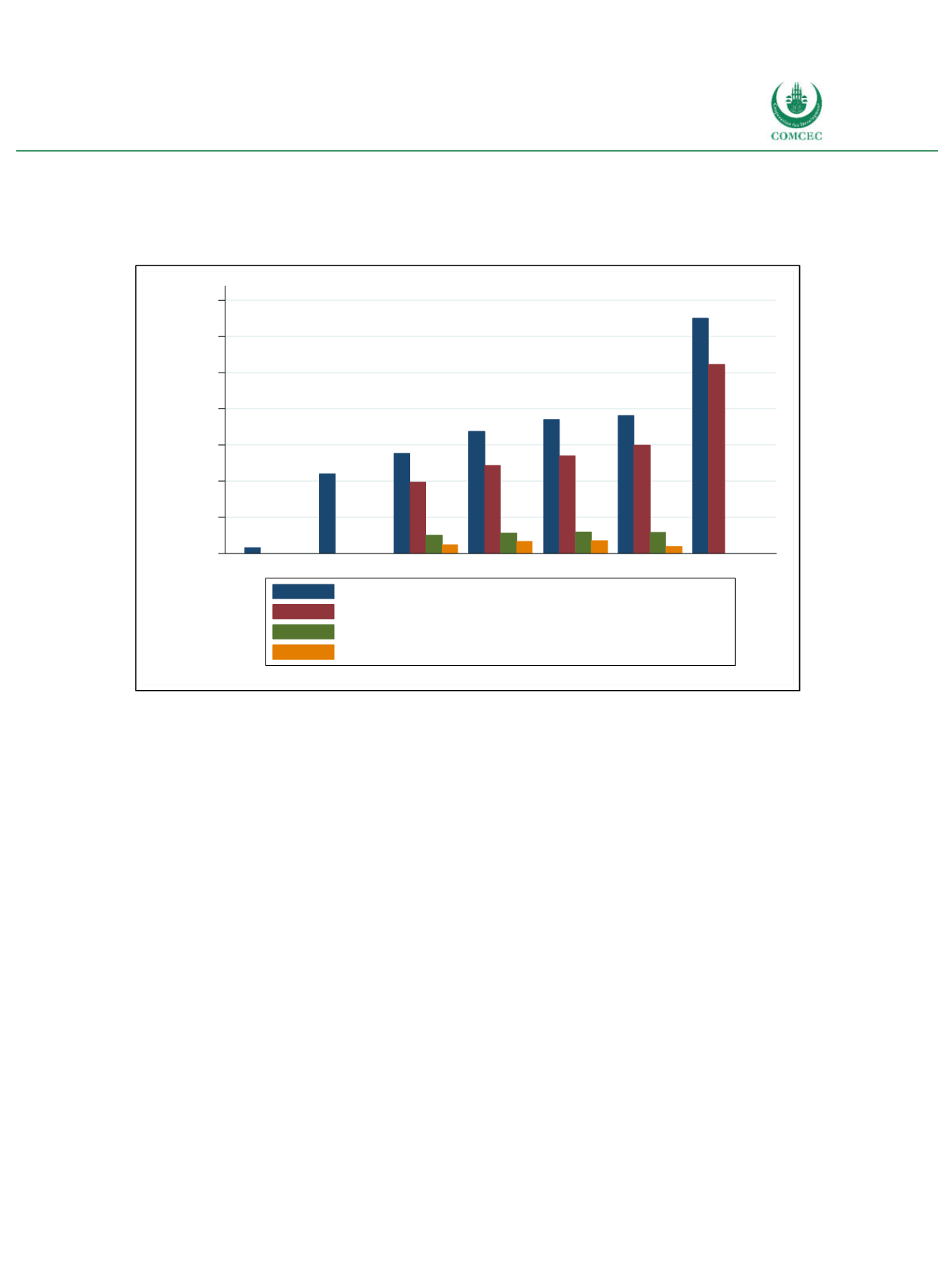

Improving Public Debt Management
In the OIC Member Countries
59
Bank of Malaysia), and overall downward pressures in the global equity markets (IFSB 2016).
The Islamic finance sector is forecasted to continue growing strongly in the future: until 2020,
Islamic finance assets are projected to reach $3.25 trillion (Reuters 2015).
Figure 3-15: Global Assets of Islamic Finance
Note: Data for banking and takaful in 2015 refers to 2015H1, data for sukuk and Islamic funds refers to 2015M11.
Projections for sukuk, Islamic funds and takaful are not available for 2020. Sources: IFSB (2016), OIC (2012),
Reuters (2015), calculations by the Ifo Institute.
Islamic banks are supposed to focus on assetbased intermediation and risk sharing, whereas
conventional banks conduct debtbased intermediation and rather focus on risk transfers
(López et al. 2014). However, Islamic banks may sometimes mimic the characteristics of
conventional lending products while complying with sharia principles. A large share of the
liability side of Islamic banks is based on profit and loss sharing (Baele et al. 2014). In general,
Islamic banks invest mostly by engaging in trade and industrial activities. Investments are
based on partnerships or on shared profit agreements with depositors (Lewis and Algaoud
2001). Islamic banks tend to be better capitalized (Beck et al. 2010) and financially stronger
(Čihák and Hesse 2010) than conventional banks. Moreover, Islamic finance limits excessive
risktaking and leverage (Baele et al. 2014).
To illustrate the size and importance of the Islamic banking sector, Figure 316 shows the
Islamic banking share in total banking assets for individual countries. A banking share of 15%
or more indicates that the Islamic financial sector is systemically important in the respective
country. As the whole financial systems in Iran and Sudan rely on Islamic principles, the
Islamic banking share is 100% in both countries. Other countries have established mixed
systems consisting of conventional banks and
sharia
compliant banks (see also COMCEC
2016b). Figure 317 shows that Iran had the largest share of worldwide Islamic banking assets
in 2015 (37.3%), followed by Saudi Arabia (19%), Malaysia (9.3 %) and the United Arab
Emirates (8.1%).
0
500
1,000
1,500
2,000
2,500
3,000
3,500
Billion U.S. dollars
2000
2011
2012
2013
2014
2015
2020
Total assets
Banking assets
Sukuk (bonds)
Islamic funds, Takaful (insurance) and other assets
















